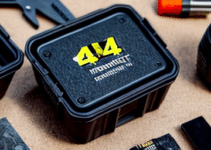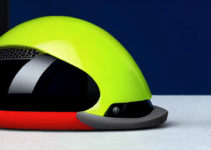A personal protective mask is an essential part of emergency preparedness and should be included in your disaster supplies. This piece of personal safety equipment is essential for protecting yourself from harmful particles and pollutants in the air during a disaster.
Whether it's smoke from a fire or dust from an earthquake, wearing a personal protective mask can prevent respiratory issues and ensure your safety.
In addition to personal safety equipment, it is also important to have a plan in place for emergencies.
This includes creating an emergency contact list, designating a meeting point for your family, and familiarizing yourself with evacuation routes in your area. Having a plan and practicing it regularly can help you stay calm and make informed decisions during a crisis.
Staying informed is crucial for personal safety during disasters. Set up alerts on your phone for weather updates and stay tuned to local news channels for any emergency preparedness tips and updates.
Click here for more information. patriot
Importance of Personal Safety Equipment in Disasters
When it comes to personal safety in the face of disasters, it is crucial to have the right disaster gear and emergency tools readily available. These items can make a significant difference in emergency situations and may even determine whether a person lives or dies.
It is important to be equipped with the correct safety kits, which include emergency preparedness kits, disaster preparedness kits, and survival kits.
These kits can greatly enhance your chances of surviving a disaster.
It is not only personal safety equipment that should be considered. Emergency necessities such as food, water, shelter, and communication devices are also essential. Being prepared with these supplies can help ensure your well-being and increase your chances of successfully navigating through an emergency, whether it's having the right disaster gear, emergency tools, or emergency preparedness kits.
Essential Safety Gear for Emergency Situations
In the event of an emergency, having the proper emergency backpack filled with essential items such as emergency power, emergency radio, and emergency sleeping bag can be the difference between life and death. Personal safety equipment is crucial to navigate through dark and potentially dangerous environments, protect against hazards, and signal for help when communication is difficult.
Disasters can strike unexpectedly, so it is essential to be prepared with the right gear.
Emergency lighting, power, medicine, clothing, blankets, whistle, radio, flashlight, backpack, tent, and sleeping bag are all essential items to have on hand.
By equipping yourself with these necessary items, you can increase your chances of survival and ensure your well-being in the face of adversity
| Essential Items | Importance |
|---|---|
| Emergency Power | Provides power for essential devices |
| Emergency Radio | Allows communication and access to information |
| Emergency Sleeping Bag | Provides warmth and protection during emergencies |
| Emergency Lighting | Ensures visibility in dark environments |
Choosing the Right Emergency Survival Kit
When it comes to choosing the ideal emergency survival kit, emergency first aid is crucial for providing immediate medical assistance in challenging situations. You require a kit that is both compact and lightweight, ensuring easy transportation during evacuations or while on the move.
The kit should be durable and waterproof, safeguarding its contents from possible harm
Role of First Aid Supplies in Disaster Preparedness
During a disaster, the role of emergency response in personal safety cannot be underestimated. These supplies are essential for providing immediate medical assistance to those affected by the crisis.
When professional help is delayed or unavailable, having the necessary first aid supplies can make a significant difference in saving lives and reducing the severity of injuries.
Basic supplies such as bandages, antiseptic solutions, and pain relievers play a crucial role in treating wounds, preventing infections, and alleviating pain until emergency services arrive.
In situations where emergency services are overwhelmed or unable to reach affected areas promptly, these supplies become even more critical. They provide individuals and communities with the ability to take proactive measures, promoting self-sufficiency and reducing the burden on emergency services.
First aid supplies also contribute to preventing further complications and long-term health issues. Prompt and appropriate first aid can minimize the severity of injuries and ensure a swift emergency response.
First Aid Supplies
- First aid supplies are crucial in disaster situations where professional help is delayed or unavailable.
- Having the necessary first aid supplies can make a significant difference in saving lives and reducing the severity of injuries.
- Basic supplies like bandages, antiseptic solutions, and pain relievers play a crucial role in treating wounds, preventing infections, and alleviating pain.
- First aid supplies promote self-sufficiency and reduce the burden on emergency services when they are overwhelmed or unable to reach affected areas promptly.
Communication Tools for Staying Connected in Emergencies
It is important to mention the role of traditional communication tools in emergencies, as they play a vital role in facilitating effective coordination and information dissemination among disaster response teams during disaster relief efforts. This can include landline phones, two-way radios, and alert systems.
These tools can provide reliable communication options, especially in areas with limited mobile network coverage or power outages.
Discussing the benefits of communication apps and software can be useful.
These apps, such as WhatsApp or Signal, allow for secure messaging, location sharing, and group communication. Emphasizing the importance of downloading and familiarizing oneself with these apps before an emergency can help individuals stay connected when it matters most.
It is crucial to highlight the importance of personal safety equipment during emergencies. This can include items such as first aid kits, flashlights, and whistles, which are essential for disaster preparedness plans and survival training.
Lighting Options for Safety in Dark and Emergency Situations
Durability, it is also important to consider the safety measures of the lighting options. During dark or emergency situations, having a powerful light source can greatly enhance visibility and improve safety.
Look for lighting options that offer high lumens or adjustable brightness settings to ensure you have enough light to navigate through challenging environments.
Comfort is another factor to keep in mind when selecting lighting options for personal safety.
If you anticipate needing to wear a light source for an extended period, such as during a search and rescue operation, consider options that are comfortable to wear for extended periods. Adjustable straps and lightweight designs can help prevent discomfort and fatigue.
It is essential to ensure that the lighting options you choose are reliable. In emergency situations, you need to be able to depend on your lighting source to work when you need it most. Look for the latest safety guidelines to ensure your well-being in any situation.
| Safety Measure | Powerful Light Source | Comfortable to Wear | Reliability |
|---|---|---|---|
| Lumens or adjustable brightness settings | Enhanced visibility and safety | Adjustable straps and lightweight designs | Dependable lighting source |
Power Sources for Emergency Devices and Equipment
When it comes to emergency preparedness, having reliable power sources for devices and equipment is an absolute necessity to ensure personal safety during disasters. These power sources ensure that essential devices, such as communication tools and medical equipment, remain operational even during power outages or disasters.
In this section, we will explore different power sources that can be used during emergencies.
These include portable generators, solar panels, and battery packs.
By understanding the advantages and limitations of each power source, individuals can make informed decisions about which option best suits their needs.
We will discuss important factors to consider when choosing a power source for emergency preparedness.
It is crucial to prioritize safety and ensure that the chosen power source is compatible with the individual's needs. We will provide safety precautions and maintenance tips to guarantee the readiness of these power sources when needed. It is essential to prioritize safety awareness and invest in appropriate safety equipment to mitigate potential disasters.
Understanding the Significance of Emergency Medicine
Emergency medicine goes beyond providing immediate medical care to individuals in critical conditions; it also plays a crucial role in educating the public about emergency preparedness. By raising awareness about personal safety equipment and disaster survival kits, emergency medicine professionals empower individuals to be proactive in emergency situations.
They emphasize the importance of having first aid supplies and tools readily available and understanding how to use them effectively.
Through educational programs and community outreach initiatives, emergency medicine aims to equip individuals with the knowledge and skills to respond appropriately during emergencies.
By promoting preparedness, emergency medicine contributes to a safer and more resilient society
Emergency Medicine
- Emergency medicine professionals educate the public about emergency preparedness.
- They raise awareness about personal safety equipment and disaster survival kits.
- Emergency medicine emphasizes the importance of having first aid supplies and tools readily available.
- Through educational programs and community outreach initiatives, emergency medicine aims to equip individuals with the knowledge and skills to respond appropriately during emergencies.
Proper Clothing and Blankets for Emergencies
In emergency situations, having the right clothing and blankets can make all the difference in ensuring personal safety and comfort, especially when combined with shelter and communication. When faced with unexpected disasters or unforeseen circumstances, being prepared with appropriate attire is crucial.
Opting for durable and weather-resistant materials that can withstand various conditions is essential.
Investing in waterproof jackets, sturdy boots, and thermal layers not only keeps you dry and warm but also offers protection against extreme temperatures and potential injuries.
Additionally, blankets play a vital role in emergency preparedness, serving multiple purposes such as providing warmth and creating makeshift shelters. Lightweight and compact emergency blankets, known for their insulation properties, are ideal for their portability and can be easily stored in emergency kits or carried in backpacks. When choosing clothing and blankets for emergencies, it is important to consider the specific needs of each individual, such as food, water, shelter, communication, lighting, power, medicine, and even a whistle or radio.
Ensuring Hygiene and Sanitation in Emergency Situations
The potential questions or concerns that readers may have regarding personal safety equipment and emergency preparedness include the availability of a flashlight, backpack, tent, sleeping bag, stove, cooking, sanitation, hygiene, toilet, shower, and medication. Provide answers and reassurance to alleviate any uncertainties they may have.
Q: What types of personal safety equipment are essential during emergencies?
A: Personal safety equipment includes gloves, masks, and protective clothing.
These items act as a barrier between individuals and potential contaminants, reducing the risk of infection.
It is recommended to have these items readily available in your emergency kit.
Q: How do I properly use and dispose of personal safety equipment?
A: When using gloves, ensure they fit properly and cover your hands completely.
Avoid touching your face or other surfaces while wearing gloves. Dispose of used gloves in a designated garbage bag and wash your hands thoroughly afterwards. Masks should be worn over the nose and mouth, and proper sanitation practices should be followed, including regular handwashing and disinfecting commonly touched surfaces.
Essential Personal Safety Equipment During Emergencies
- Gloves, masks, and protective clothing act as a barrier between individuals and potential contaminants, reducing the risk of infection.
- Proper usage of gloves involves ensuring they fit properly and cover your hands completely. Avoid touching your face or other surfaces while wearing gloves.
- Used gloves should be disposed of in a designated garbage bag and hands should be thoroughly washed afterwards.
- Masks should be worn over the nose and mouth, and proper sanitation practices should be followed, including regular handwashing and disinfecting commonly touched surfaces.
Packing an Effective Emergency Backpack
When preparing an emergency backpack, it is crucial to consider the specific needs of individuals and their unique circumstances, including the assistance provided by relief services. In addition to essential items like a first aid kit and a supply of food and water, it is important to include other items that address specific concerns and provide added comfort and security.
These can include a comprehensive map of the local area, emergency contact information, a portable phone charger, and important documents such as identification and insurance papers.
It is also wise to pack a small amount of cash and spare keys in case access to banks or homes becomes limited.
By considering individual needs and including these additional items, an emergency backpack can provide a comprehensive solution to unforeseen circumstances
Essential Gear Stay Protected with Recommended Personal Protection
Essential Emergency Gear Quality Equipment





